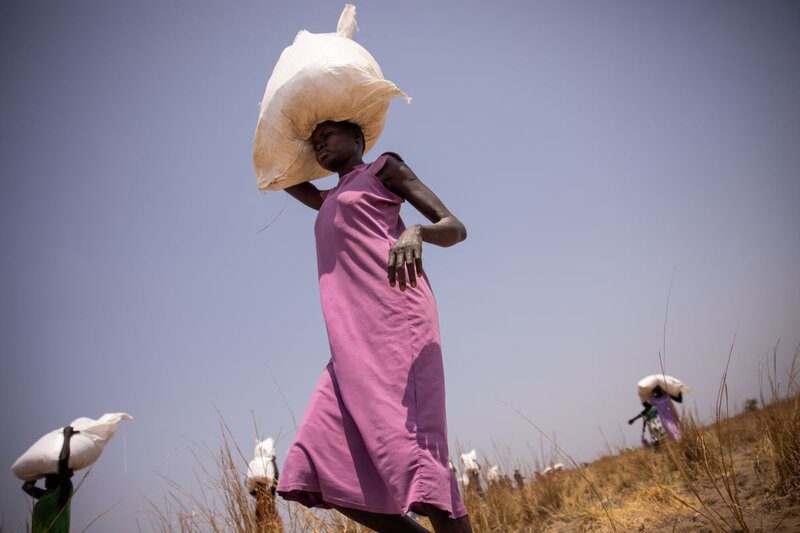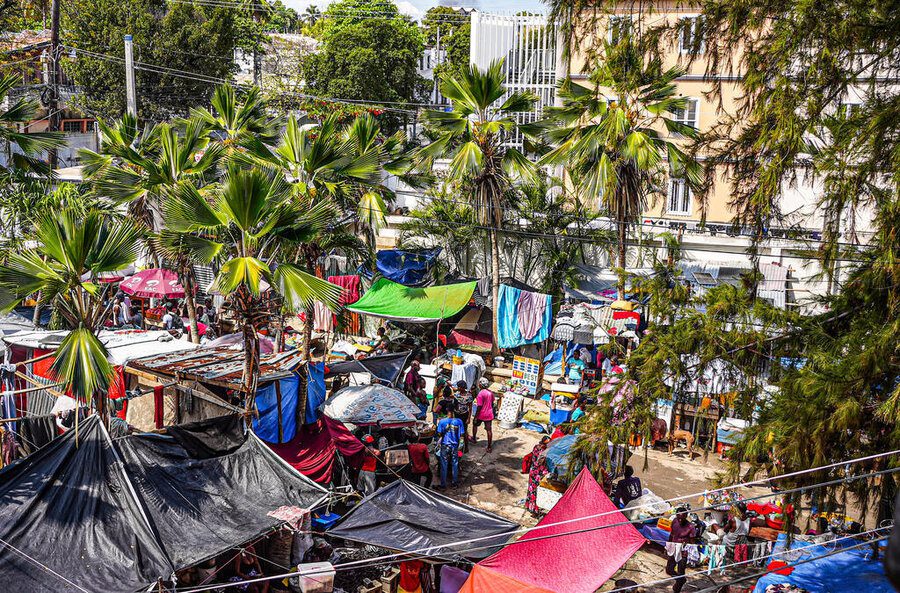Policy Resources
 WFP/Annabel Symington
WFP/Annabel SymingtonWFP USA is a thought leader in the area of global food security and international food assistance.
These are just some of the resources that help us accomplish our policy and advocacy goals, and help ensure our commitment to producing data-driven, fact-based resources for Congress, the humanitarian and development community and beyond.
Congressional Research Service
The Congressional Research Service (CRS) serves the Congress throughout the legislative process by providing comprehensive and reliable research and analysis that are timely and objective. At World Food Program USA, we use CRS reports regularly to track and Congressional affairs and accounts that pertain to our work.
[2024] Farm Bill Primer: Budget Dynamics
[2024] United Nations Issues: U.S. Funding to the U.N. System
[2024] United Nations Issues: Overview of the United Nations System
[2024] Selected Outcomes of COP28: Agriculture and Food Systems
[2024] Agriculture and Related Agencies: FY2024 Appropriations
[2024] What is the Farm Bill?
[2024] Farm Bill Primer: What is the Farm Bill?
[2024] Farm Bill Primer: Budget Dynamics
[2024] Expiration of the Farm Bill and Extension in 2024
[2024] Next Farm Bill Primer Series
[2023] Global Food Security: Selected Multilateral Efforts
[2023] U.S. Agency for International Development: An Overview
[2022] Farm Bill Primer: U.S. International Food Assistance Overview
[2022] Farm Bill Primer: International Food Aid Programs, McGovern-Dole and Local and Regional Procurement
[2022] Overview of the Global Humanitarian and Displacement Crisis
[2022] Preparing for the Next Farm Bill
[2022] Russia’s Invasion of Ukraine: Implications for Global Food Prices and Food Security
[2021] U.S. International Food Assistance: An Overview
[2021] Agriculture and Related Agencies: FY2021 Appropriations
[2021] The FY2022 State, Foreign Operations, and Related Programs Budget Request
[2020] International Food Assistance: FY2020 Appropriations
[2020] Agriculture and Related Agencies: FY2019 Appropriations
[2020] COVID-19 and Global Food Security: Issues for Congress
[2020]COVID-19 and Foreign Assistance: Issues for Congress
[2019] FY2018 and FY2019 Agriculture Appropriations: International Food Aid
[2019] International Food Assistance: Food for Peace Nonemergency Programs
[2019] Transformation at the U.S. Agency for International Development (USAID)
[2019] 2018 Farm Bill (P.L. 115-334) Primer Series: A Guide to Omnibus Farm and Food Legislation
[2018] U.S. International Food Assistance: An Overview
[2018] Foreign Aid: An Introduction to US Programs and Policy
[2018] The Marshall Plan: Design, Accomplishments and Significance
[2018] Department of State, Foreign Operations and Related Programs: FY2018 Budget and Appropriations
[2018] Farm Bill Programs without a Budget Baseline beyond FY2018
[2018] U.S. Farm Commodity Support: An Overview of Selected Programs
[2016] The Obama Administration’s Feed the Future Initiative
[2015] United Nations Reform: Background and Issues for Congress
[2015] U.S. Agency for International Development (USAID): Background, Operations, and Issues
[2011] The Obama Administration’s Feed the Future Initiative
[2010] Multilateral Development Banks: U.S. Contributions FY1998-FY2009
[2009] The U.S. Global Food Security Initiative: Issues for Congress
[2008] Rising Food Prices and Global Food Needs: The U.S. Response
[2003] The Bill Emerson Humanitarian Trust: Background and Current Issues
Foreign Assistance:
[2016] International Crises and Disasters: U.S. Humanitarian Assistance Response Mechanisms
[2016] Does Foreign Aid Work? Efforts to Evaluate U.S. Foreign Assistance
[2016] Millennium Challenge Corporation
[2016] Foreign Aid: An Introduction to U.S. Programs and Policy
[2016] U.S. International Food Aid Programs: Background and Issues
[2013] International Food Aid: U.S. and Other Donor Contributions
[2013] Foreign Aid: International Donor Coordination of Development Assistance
[2011] Africa: U.S. Foreign Assistance Issues
[2011] U.S. Global Food Security Funding, FY2010-FY2012
[2011] Foreign Operations Appropriations: General Provisions
[2010] Local and Regional Procurement for U.S. International Emergency Food Aid
[2010] Foreign Assistance Act of 1961: Authorizations and Corresponding Appropriations
[2009] Foreign Aid Reform, National Strategy, and the Quadrennial Review
[2009] Agricultural Export and Food Aid Programs
[2009] Foreign Aid Reform: Agency Coordination
[2009] Foreign Aid Reform: Studies and Recommendations
[2008] International Food Aid Provisions of the 2008 Farm Bill
[2008] Foreign Aid Reform: Issues for Congress and Policy Options
[2005] International Disasters and Humanitarian Assistance: U.S. Governmental Response
[2005] Foreign Aid: An Introductory Overview of U.S. Programs and Policy
[2005] Foreign Aid: Understanding Data Used to Compare Donors
The State of Food Security and Nutrition in the World (SOFI) Report
Government Accountability Office
The Government Accountability Office (GAO) is known as “the investigative arm of Congress” and “the congressional watchdog.” GAO supports the Congress in meeting its constitutional responsibilities and helps improve the performance and accountability of the federal government for the benefit of the American people.
[2022] Global Food Security: Coordination of U.S. Assistance Can Be Improved
[2017] Cargo Preference Increased Food Aid Shipping Cost; Benefits Remain Unclear
[2017] USAID Has Controls for Implementation and Support Costs but Should Strengthen Financial Oversight
[2017] Foreign Assistance – Agencies Can Improve the Quality and Dissemination of Program Evaluations
[2016] Actions Needed to Improve Transparency and Quality of Data on ForeignAssistance.gov
[2016] U.S. Agency for International Development—Nonemergency Food Assistance
[2015] USAID Should Systematically Assess the Effectiveness of Key Conditional Food Aid Activities
[2015] Cargo Preference Increases Food Aid Shipping Costs, and Benefits Are Unclear
[2014] Better Agency Collaboration Needed to Assess and Improve Emergency Food Aid Procurement System
[2013] USAID Is Improving Coordination but Needs to Require Systematic Assessments of Country-Level Risks
[2012] Improved Targeting Would Help Enable USAID to Reach Vulnerable Groups
[2012] Stronger Controls Needed in High-Risk Areas
[2011] USDA’s Oversight of the McGovern-Dole Food for Education Program Needs Improvement
[2011] Better Nutrition and Quality Control Can Further Improve U.S. Food Aid
[2009] A U.S. Governmentwide Strategy Could Accelerate Progress toward Global Food Security
Lancet Series on Maternal and Child Undernutrition
USAID
U.S. International Food Assistance Reports
2022, 2021, 2020, 2019, 2018, 2017, 2016, 2015, 2014, 2013, 2012, 2011, 2010, 2009, 2008, 2007, 2006
Emergency Food Security Program – Reports to Congress
2021, 2020 2016, 2015, 2014, 2013, 2012, 2011, 2010
General
Food for Peace Funding Overview
Global Food Security Strategy Implementation Report, FY 2022
[2019] Food for Peace FY19 Annual Report
[2017] Food For Peace FY16 Annual Report
[2017] U.S. Government Global Food Security Strategy Implementation
[2017] Food for Peace, Year in Review
[2016] Food Assistance and Food Security Strategy, 2016-2025
[2016] Food for Peace Act, Section 202(e) Funding Report
[2013] Food for Peace: How Title II Food Aid Works
[2011] Food Aid Quality Review
These are just some of the resources that help us accomplish our policy and advocacy goals, and help ensure our commitment to producing data-driven, fact-based resources for Congress, the humanitarian and development community and beyond.
Latest News
- News Release
- June 10, 2025




